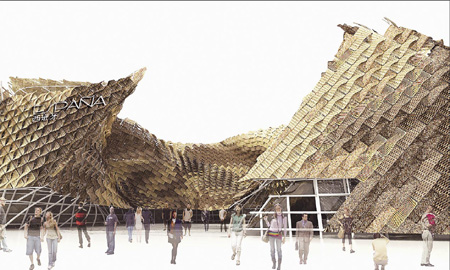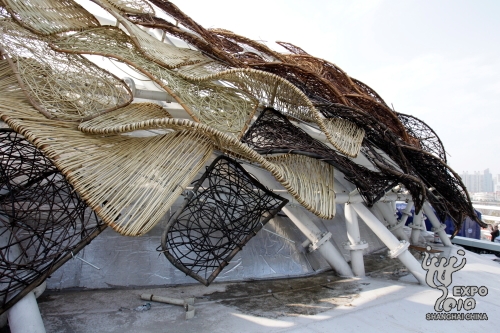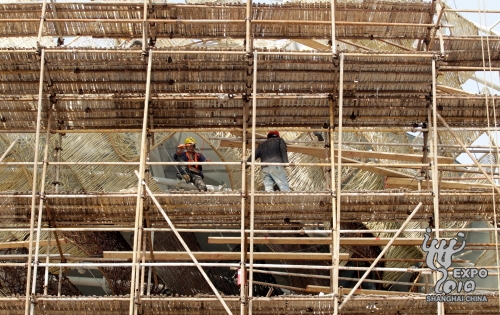Taking the shape of a giant wicker basket, the Spain pavilion will naturally shed a light on the future while commemorating the anicent craftsmanship of both Spanish and Chinese cultures.
 |
|
An artist's rendition of the Spain pavilion
|
"It is really a spectacular building, not only for its size and shape, but also for the dynamic effect created by its 'skin' made of wicker," said Maria Tena, commissioner-general of Spain for the Shanghai Expo.
"The material has deep roots in both China and Spain, and the wicker also calls upon a look to the future without forgetting our traditions."
The only wicker-made structure entered its final stage of construction with workers last week starting the process of placing 8,524 strips of wicker on the exterior of the pavilion.
When complete, the sandy-colored wicker pieces being strategically strewn will appear in the form of Chinese characters from afar, said the pavilion's architect Benedetta Tagliabue, the head of a Barcelona-based studio.
Known as "The Basket", the structure which has already been credited as one of the most distinguished pavilions in terms of design, will also make Chinese proud as its featured material was produced by natives of Shandong province.
The handcrafted wicker strips have a practical purpose beyond its aesthetic value, too. Each piece has been sized and shaped to cover a particular section of the steel-and-glass frame skeleton, filtering just the right amount of light into the pavilion.
"The layout and placement of the wicker panels is a big technological challenge because wicker has never before been used for a building of such large scale," said Tagliabue.
Tagliabue added that the more circular shape of the pavilion strays from that of a common square building to allow visitors more freedom in movement as they wander around the pavilion.
Covering a surface area of 7,000 sq m on a 6,000-sq-m plot of land, the pavilion will be among the largest of the foreign pavilions in the Expo garden when the Expo opens in May. Other competitors in this field include the United States, France, Britain, Germany and Italy.
Inside, the pavilion responds to the Expo theme of "Better City, Better Life" with an exhibition titled "From the city of our parents to the city of our children", where Spain introduces its accomplishments over the last few decades, showing its evolution from an old country of roadside markets to a modern one which major cities' hold one of the world's most popular reputations for nightlife.
Occupying roughly one-third of the pavilion's area, the extensive exhibit filled with multimedia displays offers a unique look at the country's history through the lens of Spain's popular trio of cinematograpers, Basilio Martin Patino, Bigas Luna and Isabel Coixet.
In addition to its national pavilion, the three Spanish cities of Madrid, Barcelona and Bilbao will be represented by an independent exhibit at the Urban Best Practices Area.

scene of the construction site

scene of the construction site

